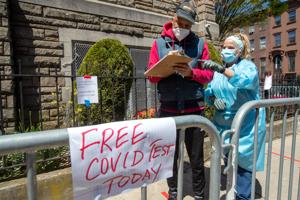New nationwide health report reveals mixed results for New York

(The Center Square) – Statewide, fewer New York residents smoke, compared to the rest of the country, but high rates of income inequality has resulted in chronic disparities in health resources.
These were among some of the findings in the recently released 2020 edition of America’s Health Rankings, an annual report from United Health Foundation. The document looked at each state’s health realities at the outset of COVID-19.
In an executive summary, authors of the report said a number of changes have been incorporated into what is the 31st edition of the document.
“Using an updated model, this year’s annual report examines the impact that social, economic and environmental factors have on overall health,” the authors wrote. “The report highlights 74 measures of population health, covering social and economic factors, physical environment, clinical care, behaviors and health outcomes data, drawing from 20 publicly available data sources.”
As a state, New York fared well in a number of metrics, including a low rate of cigarette smoking. The state tied with Maryland as having the 7th lowest percentage of adult smokers, clocking in at 12.7 percent.
Gov. Andrew Cuomo and other state officials have been on the attack of nicotine and e-cigarette use in recent years. Early in 2020, for example, Cuomo announced the campaign #NoVapeNY, which took aim at the online, phone and mail order sale of e-cigarettes.
“This is a scourge on our state and our nation,” Cuomo said in his announcement of the campaign and legislation. “If these chemicals don’t kill you, you wind up addicted to nicotine.”
An increasing number of residents across the state also have taken to exercise in recent years. According to data culled for the report, the number of adults engaging in physical activity increased 22 percent between 2017 and 2019.
But New York also ranked at or near the bottom in a number of other metrics. The state ranked No. 45 in the country for child immunizations. Based on findings, United Health researchers reported 70.8 percent of children received the recommended doses of seven key vaccines.
Researchers also noted higher than average rates of income inequality and the scenario’s correlation to health.
In this year’s state profile, New York continued increases in a number of negative conditions – including chlamydia, up 44 percent; suicide, up 21 percent; and obesity, up 15 percent.
Nationwide, United Health researchers pinpointed a number of trends, particularly within the realm of mental health.
Leading up to the pandemic, the suicide rate across the U.S. increased 2 percent between 2017 and 2018, which the authors said was “continuing an upward trend.”
Additionally, 1.3 million more adults in the country reportedly suffered from mental health distress between 2018 and 2019, which represented an 11 percent increase.
“The suicide rate has increased 23 percent nationally since 2009,” the new report states. “Notably, the suicide rate has increased 28 percent among females and 21 percent among males since 2009.”
But there was one related nationwide statistic that was positive: Each state reported an increased supply of mental health providers in recent yearly comparisons.
Disclaimer: This content is distributed by The Center Square

